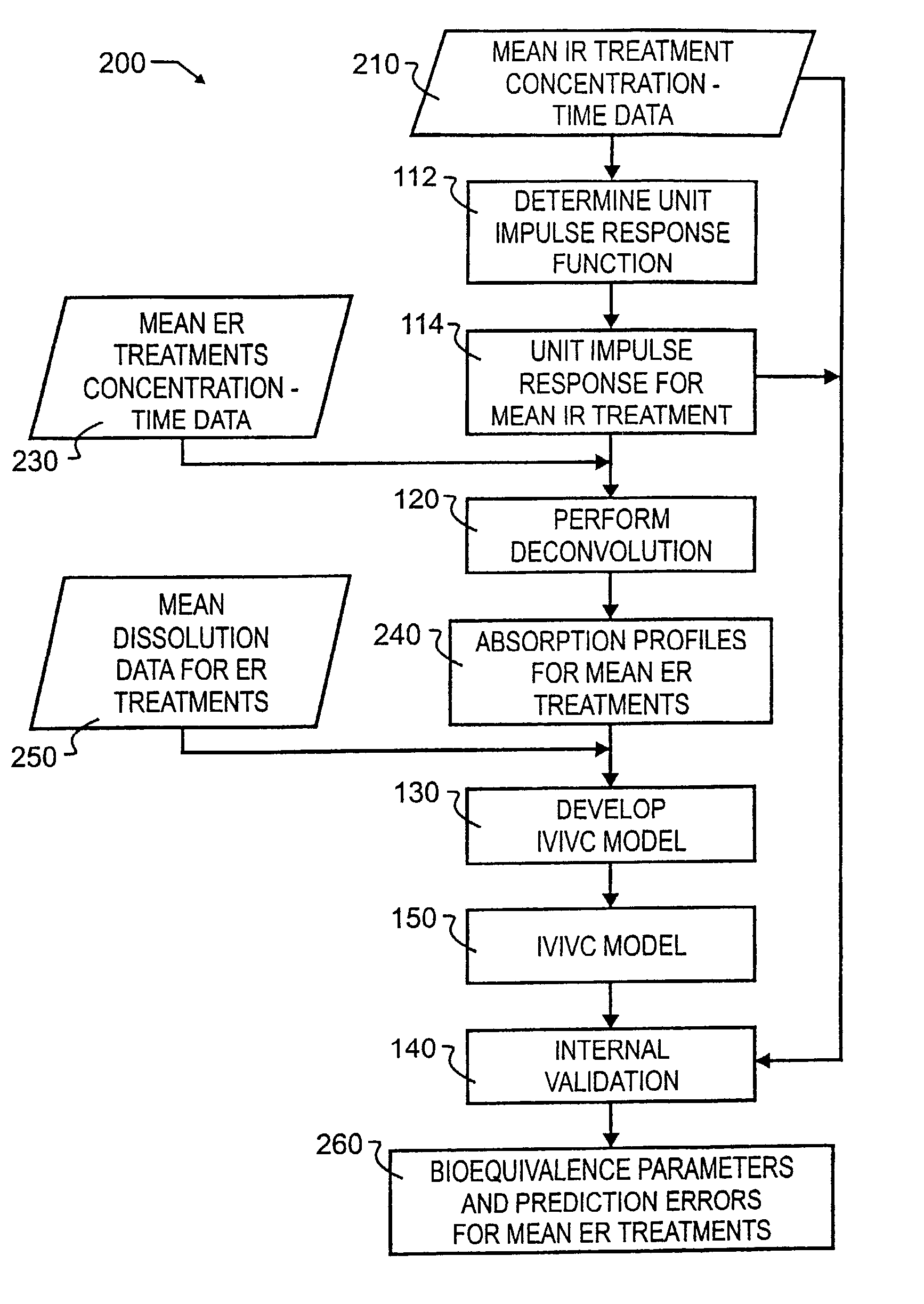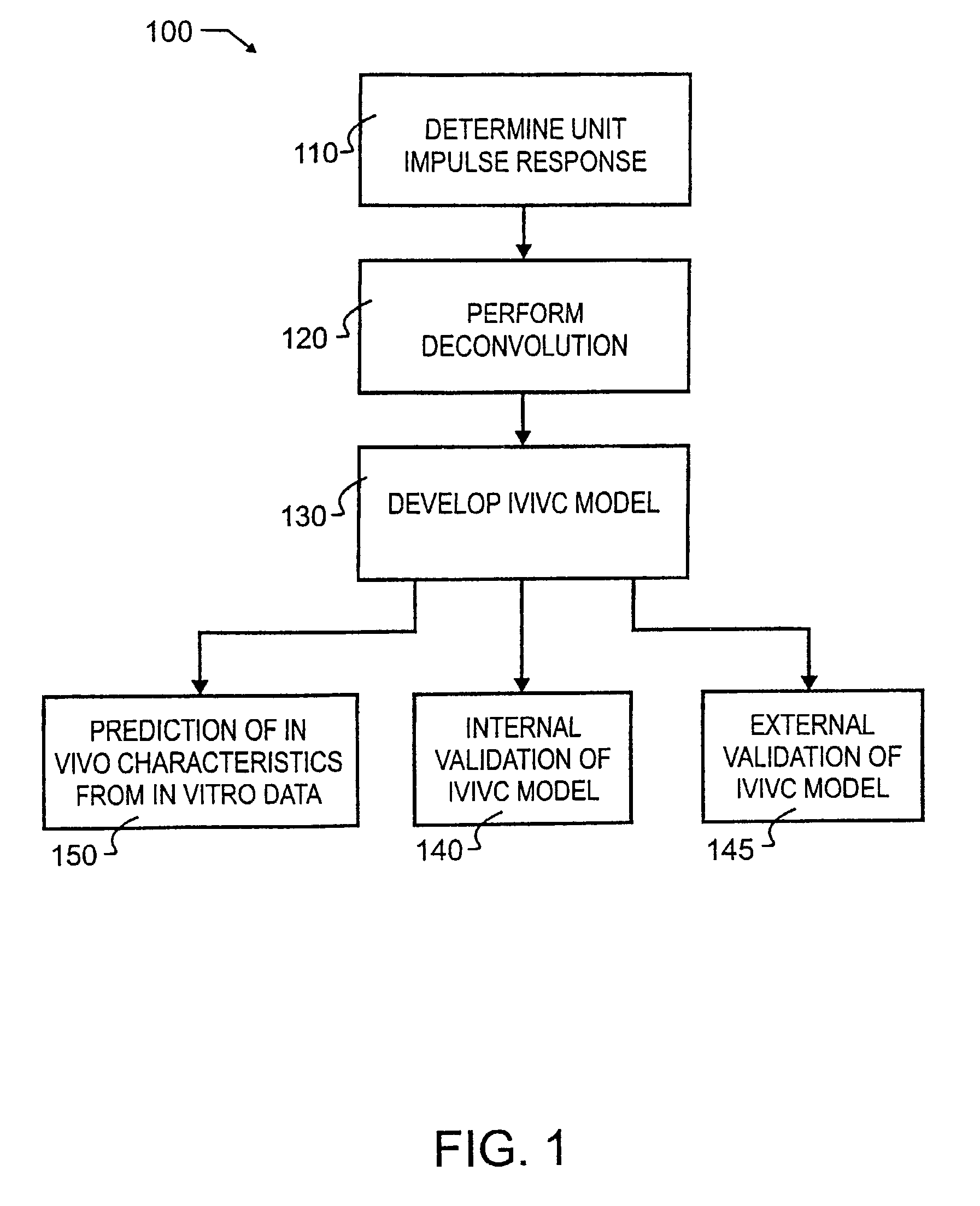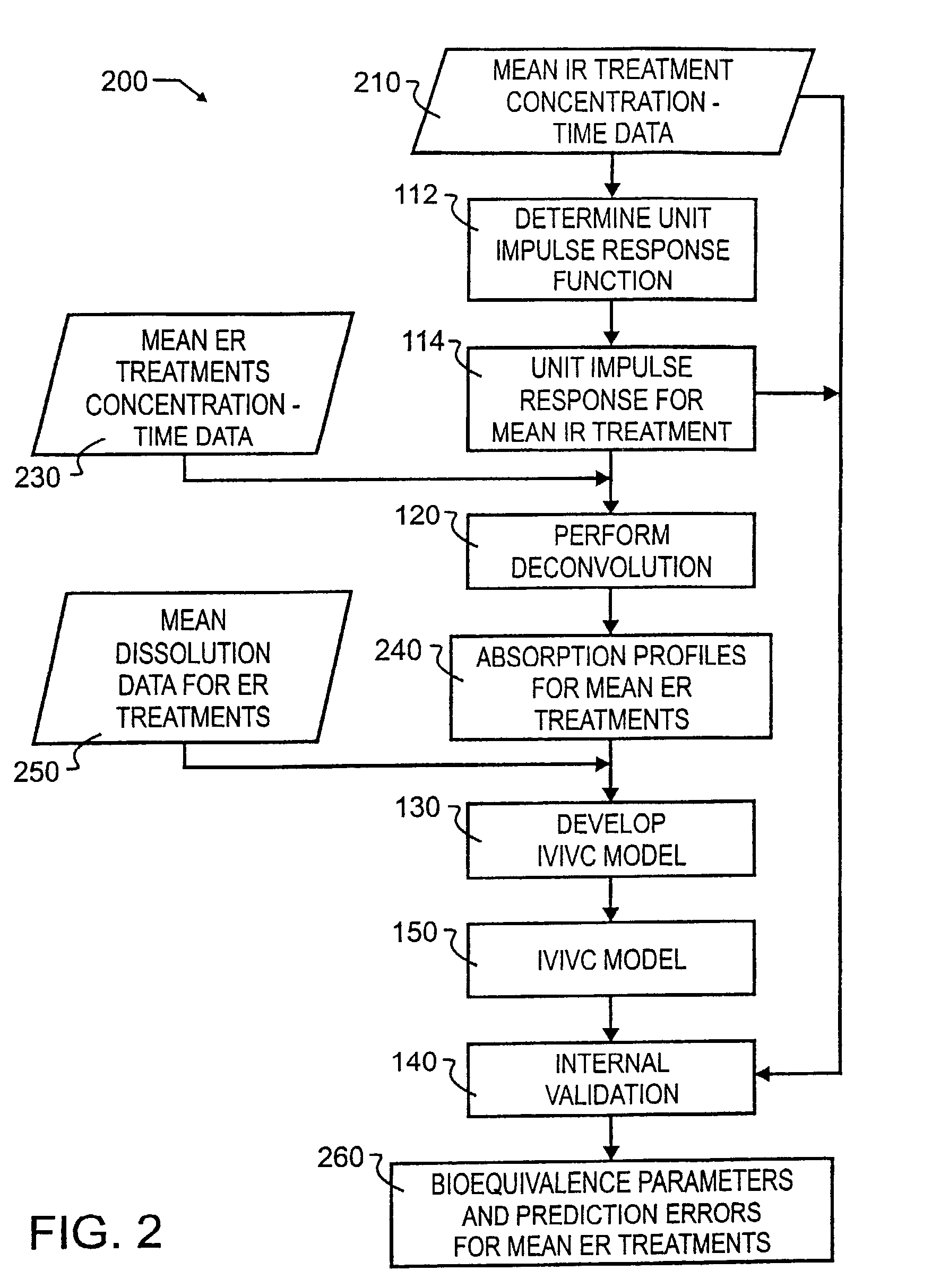Tool for in vitro-in vivo correlation
a biological system and in vitro technology, applied in the field of biological system data processing, can solve the problems of not always taking into account the multi-variable dynamic nature of patients, many prior art methods of obtaining biological process data require time-consuming laboratory experiments, and often require complex information to provide a clear and consistent picture, etc., to achieve accurate reflection of observed phenomena, efficient revealing, time-consuming and labor-intensive
- Summary
- Abstract
- Description
- Claims
- Application Information
AI Technical Summary
Benefits of technology
Problems solved by technology
Method used
Image
Examples
Embodiment Construction
[0033]A preferred embodiment IVIVC pharmacokinetic modeling and analysis method 100 showing the major processes is illustrated in FIG. 1 by simplified block diagram. As illustrated therein, preferred method 100 comprises a total of four primary processes, and two independent processes that may or may not use information provided or generated in the four primary processes.
[0034]The four primary processes include determining unit impulse response in process 110, the two stages of IVIVC model development which include the process of performing deconvolution 120 and the process of developing the IVIVC model 130, and subsequent to IVIVC model development, the process of internal validation 140. A unit impulse response function can be determined from immediate-release concentration-time data in process 110. This impulse response function is used in the deconvolution process 120 to determine the in vivo percent absorbed for the extended release formulations. A nonlinear IVIVC model is deve...
PUM
| Property | Measurement | Unit |
|---|---|---|
| chemical level | aaaaa | aaaaa |
| time | aaaaa | aaaaa |
| concentration | aaaaa | aaaaa |
Abstract
Description
Claims
Application Information
 Login to View More
Login to View More - R&D
- Intellectual Property
- Life Sciences
- Materials
- Tech Scout
- Unparalleled Data Quality
- Higher Quality Content
- 60% Fewer Hallucinations
Browse by: Latest US Patents, China's latest patents, Technical Efficacy Thesaurus, Application Domain, Technology Topic, Popular Technical Reports.
© 2025 PatSnap. All rights reserved.Legal|Privacy policy|Modern Slavery Act Transparency Statement|Sitemap|About US| Contact US: help@patsnap.com



